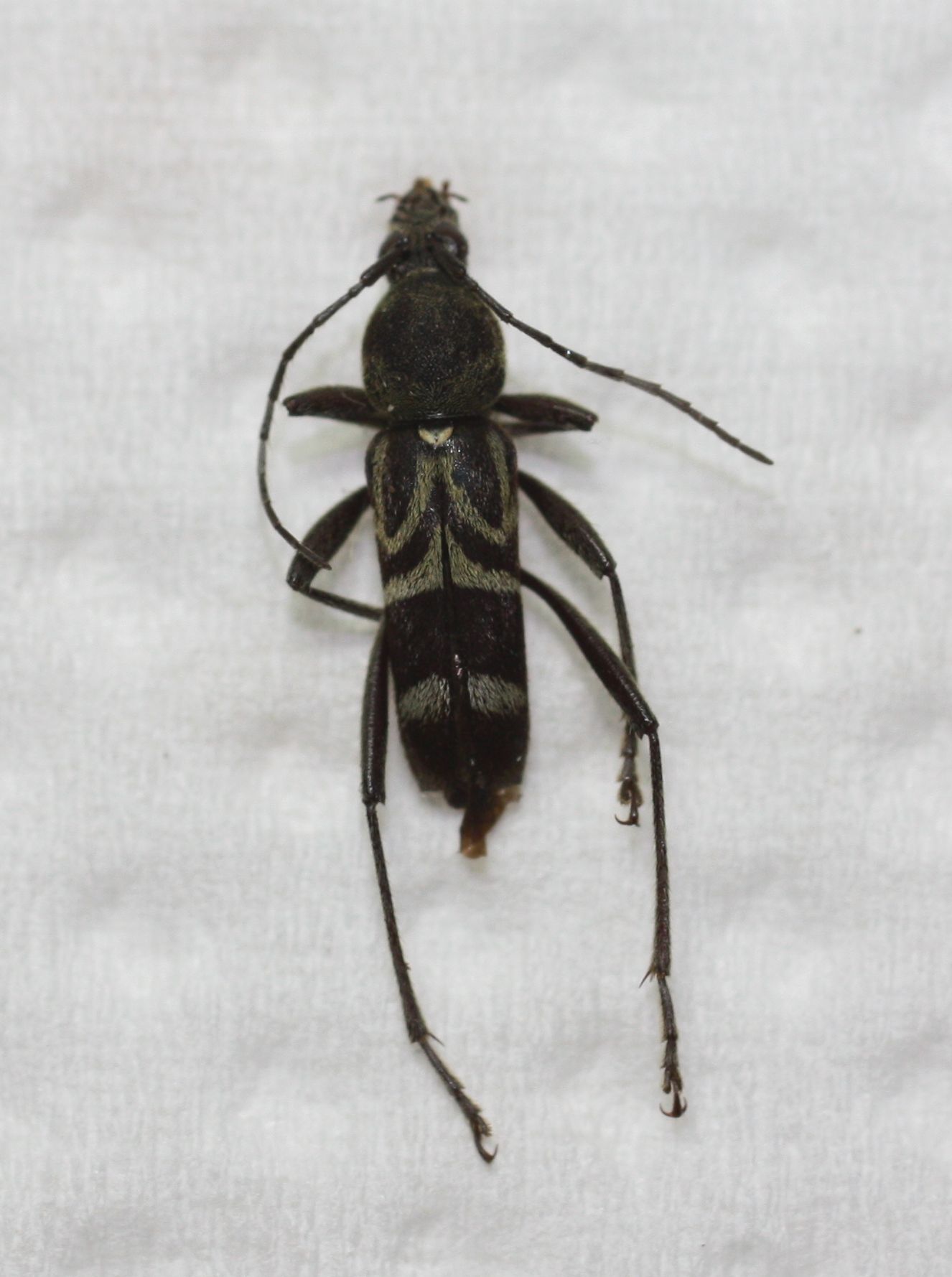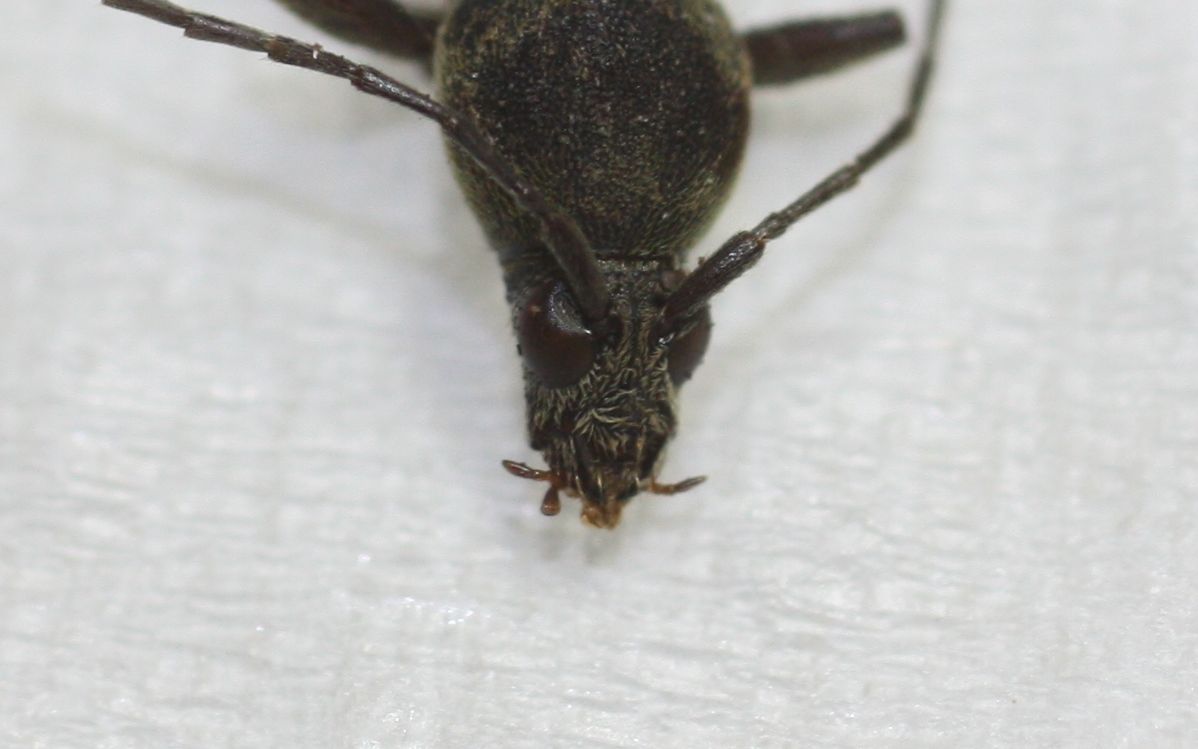| Author |
 Topic Topic  |
|
|
dpotanin
Member Purpuricenus
 
Russia
186 Posts |
 Posted - 21/11/2013 : 22:31:05 Posted - 21/11/2013 : 22:31:05



|

160.87 KB
Cameron Highlands, Malaysia
Some Xylotrechus sp.? |
Edited by - Xavier on 21/02/2016 09:18:31 |
|
|
Xavier
Scientific Collaborator
    
France
12520 Posts |
 Posted - 22/11/2013 : 08:30:17 Posted - 22/11/2013 : 08:30:17



|
| Hard to see on your picture...but probably a Chlorophorus sp. |
Edited by - Xavier on 23/11/2013 09:42:07 |
 |
|
|
Xavier
Scientific Collaborator
    
France
12520 Posts |
 Posted - 23/11/2013 : 09:44:06 Posted - 23/11/2013 : 09:44:06



|
Could you make a good frontal view picture ? , or check if it's got or not a carena on the forehead ?
(anyways, the length of the antenna is for Chlorophorus sp.) |
Edited by - Xavier on 23/11/2013 09:45:44 |
 |
|
|
dpotanin
Member Purpuricenus
 
Russia
186 Posts |
 Posted - 23/11/2013 : 10:46:19 Posted - 23/11/2013 : 10:46:19



|
Here is the best photo I can got now

79.17 KB |
 |
|
|
Xavier
Scientific Collaborator
    
France
12520 Posts |
 Posted - 30/01/2016 : 19:12:10 Posted - 30/01/2016 : 19:12:10



|
| Very close to Chlorophorus lituratus (Castelnau & Gory, 1841). I have specimens from Sabah, even the type is from " E. India " |
 |
|
|
dryobius
Member Rosenbergia
   
USA
1895 Posts |
 Posted - 21/02/2016 : 05:03:50 Posted - 21/02/2016 : 05:03:50



|
Per original article, type locality is "Indes-Orientales".
For me, this translates to "East Indies", which is a common name for the entire Indonesian archipelago, including Borneo. This, I strongly believe, has nothing to do with the country of India.
In my current collection, I only have 2 C. lituratus from only Sabah, identified by Dauber many years ago. I can not remember how many lituratus I have seen, but the number is very large. The markings on the eltrya vary a little, and the white pubescence can be easily rubbed off. So, this species is relatively common in Sabah, and I would guess that it occurs in Sumatra and West Malaysia. |
 |
|
| |
 Topic Topic  |
|


